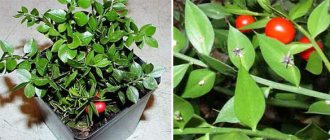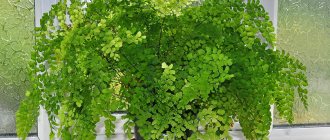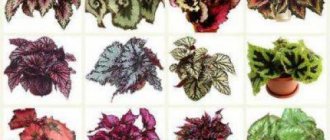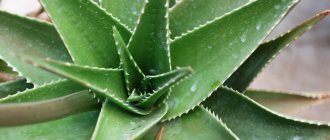The genus contains about three hundred independent species. But it is the medicinal properties of blue agave, as well as American agave, that are more often successful in folk medicine.
The word "Mexico" is defined as "the place of the agave", and the bush itself is recognized as a national treasure of this country.
Agave is a herbaceous rosette perennial that is classified as a succulent. Its leaf is thick and fleshy, its tip is curved in a regular arc.
In some species, at the very edge of the leaf there is a spine at least 2 cm in length. Along the edges of the leaf plate there are smaller, but no less sharp, thorns.
The color of the rosette is green, with a visible bluish coating, which can be matte or waxy. Under natural conditions, the bush reaches three meters in diameter, in an apartment - no more than 50 cm. Caring for Agave is not difficult, the plant is unpretentious.
The plant loves light, and in summer it is advisable to leave it in the fresh air.
During the cold season, the flower is at rest, so the ambient temperature should not exceed 11C.
Peculiarities
Agave was introduced to the European continent in the sixteenth century, becoming a popular ornamental plant. Agave, which grows slowly, is grown indoors, while the fast-growing large plant is suitable for the garden.
Agave plants vary greatly in appearance, with leaf colors ranging from green to gray. Flowering occurs very rarely, it can happen once every forty or sixty years, and the flowering itself resembles a panicle with small yellow flowers that look like bells.
Agave flowers can be seen on rare occasions, only if you happen to be in the flowering period of the succulent.
Diseases and pests of Kalanchoe
Despite its unpretentiousness, Kalanchoe is susceptible to pests and diseases:
| Name | Signs | Treatment and care |
| Kalanchoe virus | New leaves become faded, and old ones become distorted and coarse. | There is no treatment. |
| Gray rot | The herbaceous parts of the plant become watery and covered with a gray coating. | The affected parts are removed, air humidity is reduced, and sprayed with fungicides. |
| Late blight | The leaves wither, dry out, fall off, and spots of black rot appear on the lower part of the stem. | The diseased plant is isolated from healthy ones, the humidity is reduced, diseased parts are removed and treated with special preparations. |
| Stem rot | First, black and watery spots appear, then the shoots die. | The diseased plant is separated from the others, treated with Rovral and Soprol, and the humidity in the room is reduced. |
| Ring spot | Light rings appear on the leaf blades. | There is no treatment. |
In cases of severe fungal infection and stem rot, it is better to separate a healthy shoot from a dying plant and replant it rather than treat it. In addition to diseases, Kalanchoe can be parasitized by insects. They can migrate from plants of other species, especially if the air in the room is too dry or the soil is too moist.
Pinnate
Home care
Proper indoor care includes creating favorable conditions for growing agave.
- Lighting – the succulent loves the sun and is not afraid of direct rays, so it is best to keep the plant on the south side.
- Agave does not care about air humidity, so dry air will not frighten it. But the plant needs fresh air and ventilation.
- When answering the question - how to water a flower, you need to know the following. It is necessary to water the succulent no more than twice every seven days. During the cold season, watering should be done no more than twice a month, and water should not be poured into the outlet.
- It is necessary to observe the temperature regime, which should not be lower than eighteen degrees.
- Agave has no special soil requirements, but it is important to remember that the soil should not be too wet. You need to use drainage and add sand to the soil.
Benefits and harms
For what ailments and how does it help?
Agave folk remedies are recommended for the following problems:
- Diseases of the gastrointestinal tract: ulcers, gastritis, colitis, constipation, dyspepsia. The plant improves the functioning of the digestive system. Strengthens the peristalsis of the large intestine. Eight to nine hours after taking the product, a laxative effect appears. Agave also helps get rid of unpleasant symptoms such as belching, heartburn and bloating.
- Diseases of the respiratory system: bronchitis, bronchial asthma, pneumonia, tuberculosis. The plant facilitates expectoration of mucus and relieves inflammation. Is an antiseptic. It is especially useful to mix agave with natural honey.
- Skin manifestations: irritation, pimples, boils, abscesses. An agave leaf, cut lengthwise, should be applied to the area of inflammation. The plant will suck out the pus and speed up the healing process.
- Burns and frostbite. Traumatic injuries to the skin: abrasions, bruises, hematomas. The mucus secreted from the leaves of the plant cleanses the skin of dirt and germs. Improves blood clotting. Reduces pain. Activates the processes of regeneration of damaged tissues. Promotes wound healing.
- Diseases of the urinary system: inflammation of the bladder, ureters. The plant is able to eliminate inflammatory processes. Has a diuretic effect.
- Flu, colds, sore throat. Agave helps reduce fever and is used as an antiseptic and anti-inflammatory agent.
- Diseases of the joints and spine: radiculitis, rheumatism, arthrosis, arthritis, gout. The flower has an analgesic effect.
- Headache and toothache.
- Edema. Agave accelerates the formation and elimination of urine. Reduces fluid levels in the body.
- Venereal diseases.
- Excess weight. The plant promotes gentle cleansing of the body and improves metabolism. Removes excess water and toxins.
In the pharmaceutical industry, important hormones progesterone and cortisol are obtained from agave leaves. A hormonal drug that prevents pregnancy is produced from the plant.
Possible harm and contraindications
Agave can act as a strong allergen. Before external use, you should do a skin sensitivity test. Apply a few drops of juice to your wrist or elbow. If redness, swelling, itching, burning or other negative reactions occur, it is not recommended to use agave products.
Freshly squeezed plant juice is caustic. Before ingestion, it must be diluted with warm water. Oral medications are contraindicated in the following cases:
- pregnancy;
- exacerbation of kidney and liver diseases;
- gallbladder diseases;
- the presence of constant internal bleeding.
Preparations from agave can cause active secretion of bile.
Important! People planning to conceive a child in a short time should not take the juice of the plant.
Transfer
Various photos of Agave will help you choose exactly the type that is suitable for growing. As for replanting, this plant grows very slowly, so it practically does not need replanting. Agave needs to be replanted when the pot can no longer accommodate the root system.
Young plants grow quickly, so it is recommended to replant them once a year. The diameter of the pot should be slightly larger than the root system for the succulent to feel comfortable.
Kalanchoe does not bloom: reasons
Kalanchoe is an indoor perennial plant from the Crassulaceae family. In natural conditions, there are about 200 species of Kalanchoe, the flower of which differs in shape and color for each variety. It is thanks to its bright and rich panicles that Kalanchoe is in great demand in flower shops, and then delights the eyes of its new owners on the windowsill and in the home greenhouse.
It often happens that after anxious waiting, the Kalanchoe flower never releases. But why is this happening?
There are many reasons for this phenomenon:
- The store might sell you not the parent flowering form, but a Kalanchoe hybrid that exists for no more than one year.
- Kalanchoe, the care of which begins with choosing the right type of soil, is not suitable for a substrate in a pot.
- Kalanchoe does not bloom and at the same time the foliage mass grows rapidly due to a lack or excess of lighting.
Let us remember that its homeland is the tropics, where daylight hours are at least 10 hours.
- The need for an urgent transplant of the plant into a larger container or a transplant that has already occurred during the last flowering.
- Abundant and frequent watering.
Kalanchoe, like its closest relatives - money tree and sedum - stores moisture in its stems and leaves and does not require frequent moistening.
- The temperature in the apartment is too low or, conversely, high.
- The beginning of the development of diseases or the appearance of pests.
Kalanchoe: Pexels
- Failure to observe dormancy, which is mandatory for all flowering plants during and after the release of color.
- Incorrectly selected feeding, which inhibits its vital functions.
The introduction of artificial mineral compounds that do not meet the vital requirements of the plant inhibits the root system, and therefore disrupts metabolism.
- Neighborhood next to Kalanchoe plants that produce essential oils.
It is not advisable to place geranium and Kalanchoe nearby. The latter feels good on the same window with cacti and other succulents.
As you can see, there are enough reasons why Kalanchoe does not bloom. Regardless of what mistake you made, you need to eliminate it as quickly as possible. And not only for the sake of the appearance of the inflorescence, but also for the sake of saving the life of the plant itself.
Reproduction
Agave produces shoots that form near the trunk of the houseplant. They need to be separated with a sharp knife and then dried a little so that the offspring do not begin to rot. After this, the flower is transplanted into the soil, which should be loose.
Agave seeds can also be used for propagation, but indoor flowers of this species grow very slowly, so this method is very difficult.
For propagation, you can also use root cuttings, which must be cut so that at least one bud remains. Agave uses seed propagation in the wild.
Stimulating flowering
If a three-year-old plant does not bloom, then you need to analyze the reasons for the delay in the budding period. These include:
- Improper watering - drying out of the earthen clod or its waterlogging. Irrigation should be regular and gentle so as not to cause root rot.
- Excess or lack of lighting - on unshaded windows, leaves can get sunburned, and in a dark room they can stretch out and die.
- Excessive fertilizing - the more often you fertilize a plant, the more energy it will spend on processing useful substances, and not on the formation of flower buds.
- Disproportional daylight hours - Kalanchoe needs less than ten hours of “sleep”.
If all these factors are absent, and the plant still does not bloom, then methods of stimulating this process are used. Conventionally, they can be divided into:
- artificial - by spraying with Ovary and Bud preparations;
- natural - by reducing daylight hours: in the evening after 17.00 the plant is covered with a cardboard box, and in the morning no later than 7.00 it is removed.
With this exposure, the crop begins to actively form flower buds. After budding has finished and the flowers have fallen off, the Kalanchoe should be allowed to rest in a cool room with seven hours of daylight.
Diseases and problems
- If an agave's foliage turns yellow, it means it lacks light or mineral fertilizers. This is also affected by too dry soil and high air temperatures.
- The edges of the leaves turn yellow from an excess of calcium.
- If cobwebs are visible on the leaves, this means that the plant has been attacked by spider mites.
- Wrinkles on the leaves indicate that the Agave plant has been exposed to temperature changes.
- If the succulent turns yellow completely, this indicates too much moisture in the soil, or, conversely, the soil is too dry. This may also indicate that the agave is going dormant.
- The most dangerous pests for agave are mites and scale insects.
External use of agave
The leaves are often used to get rid of sciatica. They are also used for sciatica. To do this, you will need to grind a leaf (200 g) to a pulp. Apply the resulting mixture to the problem area and wrap it with polyethylene. It's better to do this before bed.
For purulent wounds, the leaf is cut lengthwise and applied with the cut to the affected area, securing with a bandage. The plates should be changed frequently. If everything is done correctly, then within a few hours you will feel relief.
To treat joints, combine 100 g of leaf pulp and 1 liter of vodka. After a week, the product can be used. You should rub problem areas every day for a month. It's better to do this before bed. After application, the leg will need to be wrapped in a woolen scarf. In the morning, remove everything and rinse the knee generously with warm water.
Application in medicine
In medicine, the American agave is most often used, which has medicinal properties. It is a natural sweetener and is often used in diets and for dietary nutrition. Agave tastes like honey, and the juice of the plant has a healing effect on the digestive system and stomach.
The plant can also be used as compresses and lotions; it helps heal purulent wounds and abscesses, and also perfectly heals various skin injuries, including bruises and scratches.
The succulent is also famous for secreting special substances that have antimicrobial effects. By inhaling these substances, the human immune system is strengthened, and the air is naturally purified.
In the description of the flower it is also worth pointing out that agave destroys harmful insects if placed in a room in the amount of one or two flowers.
Composition and healing properties
The chemical composition of the plant has not been fully studied. Agave contains the following components that are valuable for health:
- Vitamins: A, K, E, C, B1, B4, B5, B6, B9, PP.
- Minerals include trace elements: iron, copper, zinc, selenium, manganese. And macroelements: phosphorus, calcium, potassium, magnesium, sodium.
- Essential amino acids.
- Carbohydrates.
- Glycosides.
The flower has such medicinal properties as:
- anti-inflammatory;
- painkiller;
- hemostatic;
- antiseptic;
- expectorant;
- diuretic;
- laxative;
- wound healing.
Indoor agaves are just as beneficial as wild ones.
State of rest
Growing at home means the agave is in a dormant state. The succulent goes into a dormant state in the fall, this period lasts until the spring season.
In this state, the agave must be kept at a low temperature from zero to ten degrees, only in this way will it feel comfortable and be able to emerge from its suspended animation.
If the temperature is from zero to ten degrees, the succulent does not need to be watered, but if it is higher, then watering is necessary, but very rarely, this will help prevent the soil from drying out.
Outdoor care
For landscape design, elephant and aloel varieties are used. The plants are unpretentious, do not need regular watering, but are heat-loving, need fertilizing and natural or artificial lighting. Before frost sets in, it is recommended to transplant the agave into a large pot and move it to a bright, cool room. In winter, the plant will feel better at a temperature of +8-15 degrees; it should rarely be watered and fed. At a temperature of +10, watering is stopped completely.
Interesting Facts
Mexicans use the agave plant to make alcoholic drinks. The most famous of them are tequila and pulque. Agave fibers are used to weave strong ropes, nets for fishing, and lasso.
The pride of Mexico is the blue agave, from which the famous alcohol is made by distilling its juice from the core. Agave plantations in this country are included in the UNESCO World Heritage List.
Tequila and pulque are made from a succulent that is at least twelve years old. They have learned to make fabric and wrapping paper from its tough fibers, in addition, the plant is often used in modern medicine for the use of creams, ointments and other medicines.
How to make agave medicine at home
Infusion for the treatment of stomach, liver
To prepare an infusion that helps with various hepatitis, ulcers, gastritis, you need to take a fresh agave leaf in the amount of 50 g. Finely chop it with a knife. Pour boiling water in an amount of 200 ml. Leave at room temperature for 5-6 hours. The infusion is taken three times a day before meals.
At one time, you need a tablespoon of the resulting product. If it is not possible to prepare an infusion from fresh leaves, you can air dry the agave leaves. Grind them into powder and take half a gram for the same diseases three times a day.
Agave for bronchitis, tuberculosis and pneumonia
To prepare a remedy for the treatment of pulmonary diseases you need:
- 20 ml fresh agave juice
- 20 g of internal rendered fat, pork or goose will do
- 50 g cocoa powder
- 100 g each of honey and butter
All components are thoroughly mixed. Drink the product twice a day. add a tablespoon to a glass of milk and drink the resulting mixture.
Treatment of boils with agave
To retract pus and relieve inflammation, a piece of agave leaf is cut lengthwise and placed with the inside on the abscess. Secure with a bandage. As it dries, the sheet is replaced with a new one until the abscess is cleared of pus. When using agave leaf to treat abscesses, do not forget about allergies to its juice.
In addition to its medicinal properties, agave serves as a raw material for the production of various alcoholic drinks, many of which are popular all over the world, primarily pulque and tequila. In the national economy, fiber is obtained from the leaves and very strong ropes and ropes are knitted.
Video about transplanting agave:
Photo of team plant Agave
Pests of Kalanchoe
| Insects | Manifestations on leaves | Methods of disposal |
| Spider mites | First, yellow dots and a thin cobweb appear, then they turn completely yellow, and new shoots become deformed. | In case of primary damage, the leaves are washed with a soap solution; in case of massive damage, they are treated with acarids. |
| Aphid | The entire herbaceous part turns yellow and becomes deformed, covered with a sticky coating, and curls. | They apply tobacco dust and insecticidal agents: Komandor, Zubr, etc. |
| Mites with different claws | They bend down, become covered with brown scabs, their tissue bends and hardens. | In case of minor damage, wash the leaves with soapy water; in case of severe damage, spray them with Fitoverm, Vermitek, Akarin. |
| Mealybugs | Covered with white waxy secretions. | The affected parts are removed and sprinkled with M-30 mineral oil and insecticidal preparations. |











